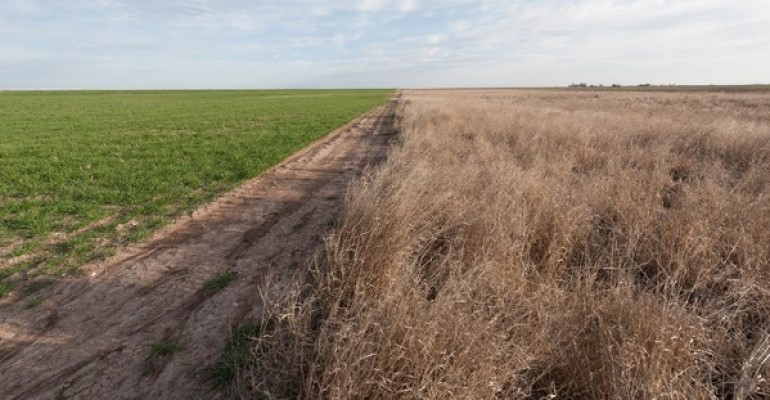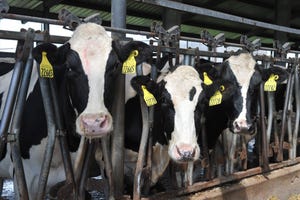USDA releases final CSP rule
Under direction of farm bill, rule updates working land conservation program.
October 9, 2020

The U.S. Department of Agriculture released the final rule for its Conservation Stewardship Program (CSP). The rule makes updates to the popular conservation program, as directed by the 2018 farm bill, and integrates feedback from agricultural producers and others.
CSP is offered in all 50 states and the Pacific and Caribbean areas through continuous signups. The program provides many benefits, including increased crop yields, decreased inputs, wildlife habitat improvements and increased resilience to adverse weather. CSP is for working lands, including cropland, pastureland, rangeland, non-industrial private forest land and agricultural land under Indian tribe jurisdiction.
Kevin Norton, acting chief of USDA’s Natural Resources Conservation Service (NRCS), said, “NRCS has prioritized the implementation of the 2018 farm bill, including important changes to the Conservation Stewardship Program, which is designed to help farmers put more robust conservation activities in place."
The final rule better aligns CSP with NRCS’s Environmental Quality Incentives Program (EQIP) through common applications, contracting operations, conservation planning, conservation practices and related administrative procedures. EQIP is a voluntary conservation program that helps promote agricultural production and environmental quality by providing producers with financial and technical assistance to implement structural and management conservation practices on working agricultural lands.
NRCS received more than 600 comments on an interim final rule that was published in November 2019. Based on that feedback, the agency made the following changes in the final rule:
Adding emphasis to enhancing soil health as a way that program participants can achieve program goals;
Modifying language pertaining to locally led conservation by specifying that NRCS will solicit input from the state technical committees and by adding new Tribal Conservation Advisory councils;
Specifying that, with local working groups, these entities will “develop state-level technical, outreach and program materials”;
Making minor edits to and amended definitions for “enhancement,” “management-intensive rotational grazing” and “resource-conserving crop”;
Providing clarity to producers by adjusting language related to the set-aside for historically underserved producers;
Adjusting the language for early-start waivers to align with EQIP and reflect that the provision applies only to new conservation activities, and
Allowing for more than one contract renewal but extending the two-year program ineligibility period to include those who apply for renewal and are not selected.
Initial updates to CSP included in the interim final rule are:
Increased payment rates for adoption of cover crop rotations;
Introducing a new supplemental payment for advanced grazing management;
Creating a one-time payment for developing a comprehensive conservation plan, and
Providing specific support for organic and transitioning-to-organic production activities.
NRCS state offices announce signup periods for CSP. Additionally, existing CSP participants may have an opportunity to renew their contracts in the first half of the fifth year of their five-year contract.
In comparison to the interim rule, the final version places a greater emphasis on soil health – an issue that the National Farmers Union (NFU) had encouraged the agency to give more consideration to in comments submitted earlier this year. However, NFU said it was disappointed that USDA did not incorporate many of its other requests, including support for long-term stewardship and lower payment limits for participants.
NFU president Rob Larew stated, “We are pleased that USDA incorporated some improvements in its final rule, most notably its inclusion of soil health as a priority. However, the rule does not elaborate on how this goal will be achieved. Moving forward, we encourage the agency to provide more specifics about the ways in which the program will help farmers build soil health in order to sequester atmospheric carbon, increase yields and prevent erosion.”
Larew added, “There are several other measures that would enhance CSP’s efficacy, as we enumerated in our earlier comments. Currently, the contract evaluation process gives preference to first-time applicants over previous recipients, essentially penalizing those engaged in long-term stewardship. To encourage an ongoing commitment to conservation, USDA should instead judge applications on their overall environmental benefits. Furthermore, the program disproportionately helps the largest farms by allowing payments up to $400,000 for joint operations. CSP statute clearly limits payments to $200,000 for any operation, and USDA should enforce that for all farming operations, regardless of size.”
The National Sustainable Agriculture Coalition (NSAC) also criticized some of the missed opportunities in the final rule to improve the bill.
"This Administration seems determined to gut CSP to make it as much like EQIP as they can,” noted Eric Deeble, NSAC policy director, “and in so doing missed an important opportunity to make CSP the program into which EQIP participants can grow.”
You May Also Like



